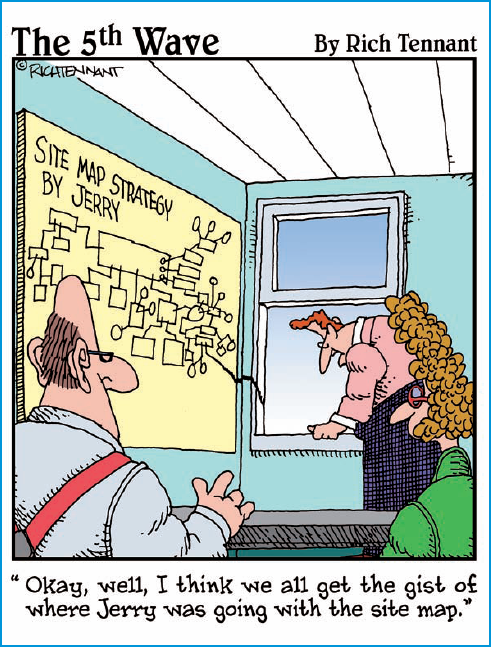Part II. User-Friendly Design

In this part ...
Most of us grew up with the mantra "measure twice, cut once" drilled into our brains — and for good reason. A little bit of planning in the beginning goes a long way in saving you a lot of time, effort, and money later in your Web design process.
Just like you'd draft a blueprint before you begin to build a structure, the first step in Web design is to organize all the site content into logical categories and subcategories, a process called information design. After you have the site's structure worked out, you must dive into the page-level detail and create diagram-like plans called wireframes for each unique page layout. You then need to test all this pre-planning with end-users to make sure it makes sense to them.
Because end-users are the final judge of a good site structure and design, Chapter 3 explores how to identify your target audience and then go about crafting your information design. Chapters 4 and 5 share techniques for optimizing usability. Finally, Chapter 6 shows you how to organize and conduct user tests to make sure your designs are on target.

Get Web Design For Dummies®, 2nd Edition now with the O’Reilly learning platform.
O’Reilly members experience books, live events, courses curated by job role, and more from O’Reilly and nearly 200 top publishers.

